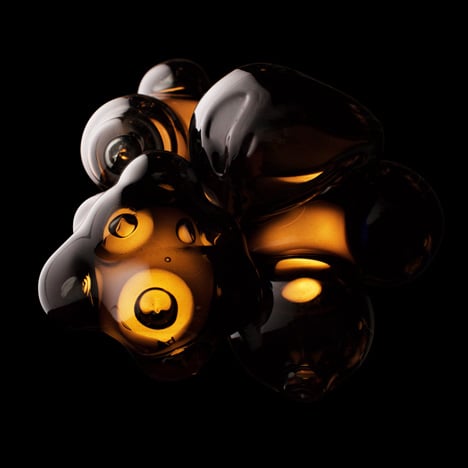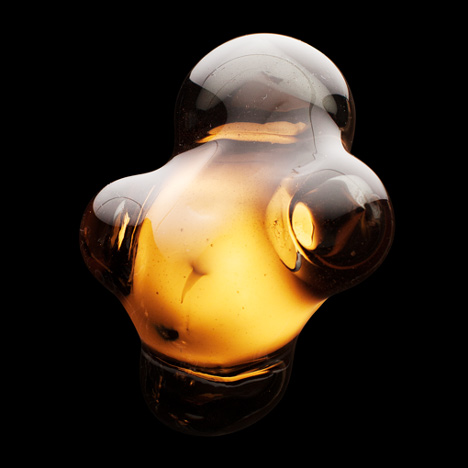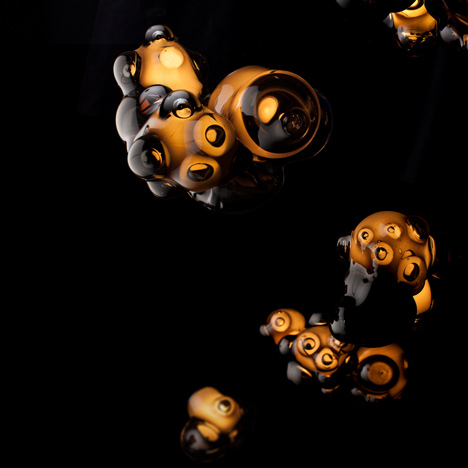57 Series by Omer Arbel for Bocci
Milan 2013: in this movie by Gwenael Lewis, Canadian lighting company Bocci's creative director Omer Arbel describes how bubbles in the firm's latest chandelier look like an "internal universe" when illuminated.

The film show glass blowers using tools to form spheres of molten glass that they mould together and reheat into a cohesive, cloud-like piece. "We began with the idea that we can manipulate the malleability of glass based on its temperature," says Arbel.

Blowing air into the glowing glass creates bubbles and pockets depending on the temperature of different areas. "The air is pushed into the assembly and makes its way out through the path of least resistance, which is where the glass is hottest," Arbel explains.

The light appears to be a smooth, shiny bobbled surface while off, but the air pockets become visible when it is turned on. "When lit, an internal universe comes alive," Arbel says.
The 57 Series will be unveiled as the centrepiece for Bocci's stand at Euroluce trade fair in Milan during Salone Internazionale del Mobile next month. We've featured a few movies by Gwenael Lewis about the making of Bocci chandeliers, including the 28 series and 14 series lights.
See all our stories about designs by Bocci »
See all our stories about chandeliers »
See all our stories about lighting »
Here's some more information from Bocci:
Bocci at Eurolace 2013
During this year’s Milan Saloni, Bocci will be exhibiting for the first time at Euroluce. In conjunction with the world’s largest furniture exhibition, Salone del Mobile, the biennial Euroluce trade fair serves as a major platform for luminaire manufactures with high design ambitions. At the centerpiece of their 280 square meter stand, Bocci will unveil a new flexible chandelier called 57 in a dramatic installation.
Designed by Omer Arbel, Bocci’s Creative Diretor, 57 is an exploration of a technique of making analogous to that used for producing open cell foam. The process involves trapping voids of air of different sizes and configurations within a glass matrix, and then injecting air into the composition, yielding a shape loosely referencing a rain cloud. These pockets of air remain invisible when the piece is off, but come alive to reveal an interior universe when the piece is turned on. As with all of Arbel’s recent body of work, it is the technique of making that yields 57’s form, which is unique in every iteration of the procedure.
A flexible suspension system allows easy composition: Pendants may be clustered such that they touch each other, referencing a cloudy sky (an especially poignant reference in the City of Vancouver, where the idea was born); they may also be composed as a field, such that each piece can be perceived individually, perhaps referencing a child’s drawing of a could (equally poignant but in a more universal manner). Most chandeliers are fundamentally vertical in composition, which is why they work best in rooms with high ceilings; in contrast, 57 is conceived as a layer or strata of light, or in other words, a horizontal chandelier.